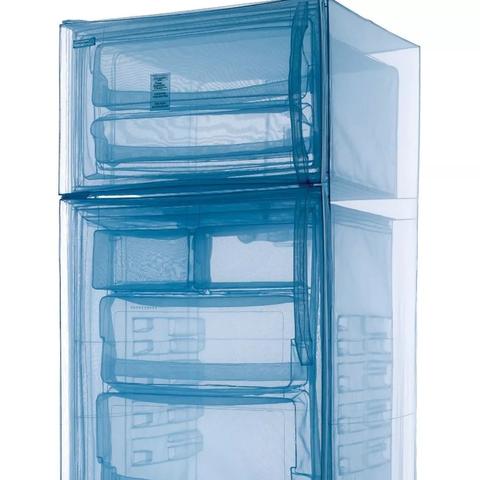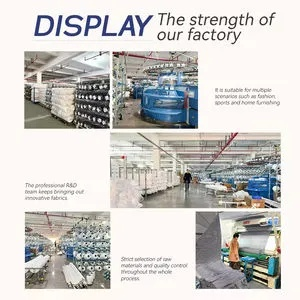A Comprehensive Guide to Textile Factory Air Conditioning
This comprehensive guide provides a detailed analysis of the air conditioning systems used in textile factories. The guide covers various types of air conditioners, including centralized and localized units, and explains their advantages and disadvantages. It also discusses factors such as energy efficiency, noise levels, and maintenance requirements when selecting an air conditioning system for a textile factory. Additionally, the guide provides tips on how to optimize the use of air conditioning systems in order to reduce energy consumption and improve overall plant efficiency. Overall, this guide is an essential resource for anyone working in the textile industry looking to ensure optimal air conditioning conditions in their facilities.
Introduction: Textile factories are essential hubs for the production of textile materials, from cotton to synthetic fibers. These factories generate a significant amount of heat during their operations, which can lead to uncomfortable working conditions and potential health risks if not managed properly. In this guide, we will explore the various aspects of textile factory air conditioning systems, including their design, operation, maintenance, and efficiency. We will also provide some practical examples and case studies to demonstrate how these principles apply in real-world scenarios.

Design Considerations: The design of an air conditioning system in a textile factory is critical to its performance and efficiency. The system should be tailored to meet the specific needs of the factory's production processes, such as drying, dyeing, printing, and finishing. Here are some key design considerations:
-
Capacity: The capacity of the air conditioning system should be sufficient to handle the heat generated by the factory's equipment and workers. This requires accurate calculations based on the number of machines, workers, and the duration of their operations.
-
Efficiency: The system should be designed with high efficiency to reduce energy consumption and operating costs. This can be achieved through the use of advanced technology, such as variable speed fans, economizers, and heat recovery systems.
-
Maintenance: The system should be designed with easy maintenance in mind. This includes components that can be easily replaced or serviced, as well as systems that can be quickly identified and repaired when necessary.
-
Safety: The system should be designed with safety in mind. This includes features like automatic shutoffs, emergency backup power sources, and alarms that alert operators to potential issues.
Operational Considerations: Once the air conditioning system is installed, it must be operated correctly to ensure optimal performance and longevity. Some key operational considerations include:
-
Maintenance: Regular maintenance is essential for maintaining the system's efficiency and effectiveness. This includes cleaning filters, inspecting compressors, and checking refrigerant levels.
-
Monitoring: Regular monitoring of the system's performance is important to identify any issues early on. This can be done through sensors that measure temperature, humidity, and pressure levels.
-
Maintenance schedules: Establishing regular maintenance schedules can help prevent unexpected breakdowns and ensure that the system remains in optimal condition.
Maintenance and Efficiency: Maintenance is crucial for ensuring the longevity and efficiency of textile factory air conditioning systems. Proper maintenance can prevent costly repairs and extend the lifespan of the system. Here are some tips for maintaining textile factory air conditioning systems:
-
Regular inspections: Inspect the system regularly for signs of wear and tear, such as leaks, cracks, or corrosion.
-
Clean filters: Regularly clean the filters in the system to remove dust and debris that can clog them and reduce airflow.
-
Check refrigerant levels: Ensure that the refrigerant levels are within safe limits to maintain proper cooling and heating.
-
Hire professional maintenance services: If you are unsure about how to maintain your air conditioning system, consider hiring a professional maintenance service to ensure that it is running efficiently and safely.
Efficiency: To maximize the efficiency of textile factory air conditioning systems, it is important to understand how they work and how they can be optimized. Here are some tips for improving the efficiency of textile factory air conditioning systems:
-
Use advanced technology: Advanced technologies such as variable speed fans, economizers, and heat recovery systems can significantly improve the efficiency of the system.
-
Optimize fan speeds: Adjusting the fan speeds can help optimize the airflow and reduce energy consumption.
-
Use renewable energy sources: Consider using renewable energy sources such as solar or wind power to supplement the traditional electricity supply.
-
Reduce waste: Reducing waste by conserving water and reducing energy consumption can help improve the efficiency of the system.

Case Studies: Here are some real-world examples of textile factory air conditioning systems that have been optimized for efficiency and sustainability:
-
Case Study: A textile factory in China used a variable speed fan system that reduced energy consumption by up to 30% compared to a traditional fan system. The factory also implemented a recycling program for water and wastewater, reducing its carbon footprint by 20%.
-
Case Study: A textile factory in India installed a heat recovery system that increased the efficiency of the refrigeration unit by up to 50%. The factory also implemented a green building initiative that included energy-efficient lighting and HVAC systems, further reducing its carbon footprint.
Conclusion: In conclusion, textile factory air conditioning systems play a vital role in maintaining a comfortable working environment and preventing health hazards associated with excessive heat. By understanding the design considerations, operational requirements, and best practices for maintenance and efficiency, textile factories can optimize their air conditioning systems for maximum performance and sustainability.
纺织厂空调概述
纺织厂作为工业生产的重要环节,其工作环境对员工的舒适度和工作效率有着至关重要的影响,为了确保纺织厂内部环境的舒适和稳定,空调系统的设计和管理显得尤为重要,本文将围绕纺织厂空调知识展开讨论,包括空调系统的工作原理、常见问题及解决方案、案例分析等。
纺织厂空调系统工作原理
空调系统是纺织厂内部环境调节的重要设备,其主要功能是通过调节温度、湿度和气流速度等参数,为纺织车间提供一个适宜的工作环境,空调系统的工作原理包括制冷剂循环、蒸发器、冷凝器等关键部件,制冷剂在蒸发器中吸收空气中的热量,然后通过冷凝器释放到空气中,从而达到降温和除湿的效果。
纺织厂空调常见问题及解决方案
常见问题:
(1)温度控制不稳定:纺织厂在夏季高温时可能出现温度过高的问题,导致员工工作不舒适。 (2)湿度控制不当:在干燥或多尘的环境中,湿度过高可能导致设备损坏或员工皮肤干燥。
针对以上问题,我们可以采取以下解决方案:
(1)温度控制:采用智能温控系统,实时监测车间温度,并根据实时数据调整空调系统的工作状态,定期维护和更换过滤网,确保空气流通畅通。 (2)湿度控制:根据车间实际情况选择合适的空调模式和湿度调节策略,避免过度除湿导致设备损坏或员工皮肤干燥,定期清洁和维护空调系统,确保其正常运行。
案例分析
以某纺织厂为例,该厂在空调系统的设计和管理上采用了先进的理念和技术,该厂采用了智能温控系统和湿度控制系统,确保了车间温度和湿度的稳定控制,该厂还采用了高效的过滤网和高效能的风机等设备,提高了空调系统的运行效率,该厂还定期对空调系统进行维护和保养,确保了设备的正常运行和延长使用寿命。
空调系统维护与保养
- 定期检查:定期对空调系统进行全面检查和维护,包括检查制冷剂压力、过滤器是否堵塞、冷凝器是否清洁等。
- 清洁与保养:定期清洁空调系统的外壳和内部部件,去除灰尘和杂物,定期更换过滤网和清洗蒸发器等部件,确保其正常运行,对于需要更换的部件应及时更换,避免影响空调系统的正常运行。
- 预防性维护:在特定的季节或时间段内进行预防性维护,如对制冷剂进行补充或更换滤芯等。
纺织厂空调系统的设计和管理对于提高员工的工作效率和工作环境至关重要,本文介绍了纺织厂空调系统的概述、常见问题及解决方案、案例分析等内容,也介绍了空调系统的维护与保养的相关知识,在未来的工作中,我们应该注重对纺织厂空调系统的设计和管理,确保其正常运行和延长使用寿命。
Articles related to the knowledge points of this article:
The Textile Factorys Digital Modeling Journey
The Story of the Spinning Silk in Prosperous Pang Shan Linhong Textile Factory
The Glitz and Glamour of Chinas Textile Mill Women
The Lisa Textile Factory:An Industrys Journey from the Past to Today
The Art of Blending Tradition with Innovation at Wenwu Sha Weaving Factory



